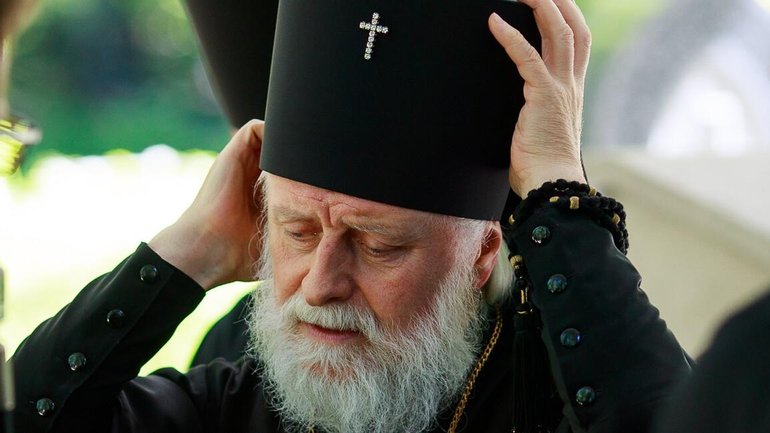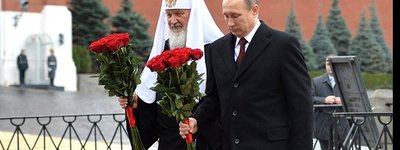The Estonian Expedient

As reported in RISU (6 February 2024) and The UBJ (United Business Journal) (Ella Bennet, “Russian Orthodox Church Leader in Estonia Ordered to Depart Amid Security Concerns,” 6 February 2024), Estonian authorities have revoked the residence permit of Metropolitan Yevgeni (in the world, Valerii Reshetnikov). The head of the Estonian Orthodox Church-Moscow Patriarchate (EOC-MP) is accused of public statements and actions supportive of Russia’s aggressive actions, particularly its war against Ukraine. Citing security risks, Estonian police and border guards warned the prelate, but he reportedly did not change his behavior. He has, however, agreed to leave the country on February 7.
This occurs at a tense moment in Russian-Estonian relations: the Russian Foreign Ministry has threatened the Baltic states with retaliatory actions because of their alleged obstruction of the upcoming Russian elections. In particular, Russia complains that Estonia has allowed Russian citizens resident in that country only one polling place, at the Russian embassy in Tallinn.
Although Estonia is a highly secularized, traditionally Protestant country, it currently has two Orthodox Churches. In fact, Slavic Orthodoxy is no newcomer to Estonia. The city of Tartu was expanded in the 11th century by the Rus’ grand prince Yaroslav the Wise, who called it Yuriev. Christianization did not really get under way, however, until the 12th and 13th centuries, and was initially conducted through conquest by the Knights of the Sword, a branch of the Catholic Teutonic Knights. Even then, it did not penetrate the people, who were not ethnically or linguistically Germanic. Although the 16th century Reformation, which introduced vernacular Scripture, was at first limited to the German-speaking nobility, the Estonian language began to be used from the 1530s in preaching and printing. During the turbulent 16th and 17th centuries, Sweden, Muscovy, Denmark, and Poland-Lithuania sought to take parts of what is now Estonia. Sweden triumphed in the 1640s. But in 1721, the newly formed Russian empire annexed the territory, and ruled it until 1917. It was during this time that Russian Orthodoxy took root there, while Lutheranism remained the majority denomination.
In the wake of the Russian revolution and Estonian independence in 1918, an independent Estonian Orthodox Church was recognized by Patriarch St. Tikhon of Moscow in 1920. Three years later, the Ecumenical Patriarch of Constantinople issued a decree (tomos) formally granting
the Estonian Orthodox Church autonomy under its jurisdiction.
In 1940, the USSR seized the Baltic states in cooperation with Nazi Germany. After the succeeding German occupation, the Soviets reconquered Estonia. The Moscow Patriarchate of the Russian Orthodox Church, revived in 1943 by Stalin’s permission, asserted jurisdiction over the Orthodox of Estonia. Consequently, the autonomous Estonian Orthodox Church went into exile in Sweden.
Estonia’s famous 1988 “Singing Revolution,” a largely secular independence movement, culminated in the country’s declaration of independence on 20 August 1991. Its constitution of 28 June 1992 guaranteed freedom of thought, conscience, and religion, with no state church (article 40). The relatively liberal 1993 law on churches and parishes did require churches to register with the government and maintain an administrative center within the country. During this time, the “Estonian Orthodox Church” under the Moscow Patriarchate (EOC-MP) continued to enjoy close ties with Moscow. The Orthodox Archbishop of Tallinn, Aleksii (Ridiger), came from a German-Balt family that had converted to Orthodoxy and remained in Estonia after Soviet annexation in 1945. In 1990 he was elected Patriarch of Moscow, and served until his death in 2008.
In 1993, however, the exiled Estonian Apostolic Orthodox Church (EAOC) took advantage of the new liberal laws and was registered in Estonia. Three years later, the Ecumenical Patriarchate reaffirmed its 1923 tomos recognizing this autonomous church. A number of EOC-MP parishes transferred to the EAOC. Despite some controversy, the division of Orthodox parishes between Moscow and Constantinople was achieved peacefully. The “Estonian scenario” was considered a model for resolving the inter-Orthodox rivalry then under way in Ukraine.
Is its deportation of a pro-Russian hierarch another Estonian lesson for Ukraine? There, as documented by Tetyana Derkatch and others, a number of Orthodox bishops, clergy, and laymen under Moscow jurisdiction have allegedly been working for the Kremlin since the Russo-Ukrainian war began nearly ten years ago. To be sure, there are important differences between the two situations. Most of the suspects in Ukraine are Ukrainian citizens, and so there is thus no question of revocable residency permits. On the other hand, while Estonia is merely an opponent of Russia’s war, Ukraine is its direct victim. Parliament is considering outlawing the Ukrainian Orthodox Church of the Moscow Patriarchate (UOC-MP) as a whole. However, far from all its members are pro-Russian, and many are pro-Ukrainian. Outlawing an entire Church also poses difficulties under both Ukrainian and international law. It has been suggested that instead, those UOC-MP members allegedly conducting pro-Moscow political propaganda and treasonous activity be prosecuted individually. That could then provide a basis for deportation.
But individual criminal prosecutions can be slow and cumbersome. In wartime, is deportation of citizens without trial “for national security reasons” an acceptable option? Legalists and human-rights advocates might well say no. Citizens, after all, have rights not extended to aliens with only residence permits. But some might be tempted to invoke the maxim “inter arma leges silent.”










